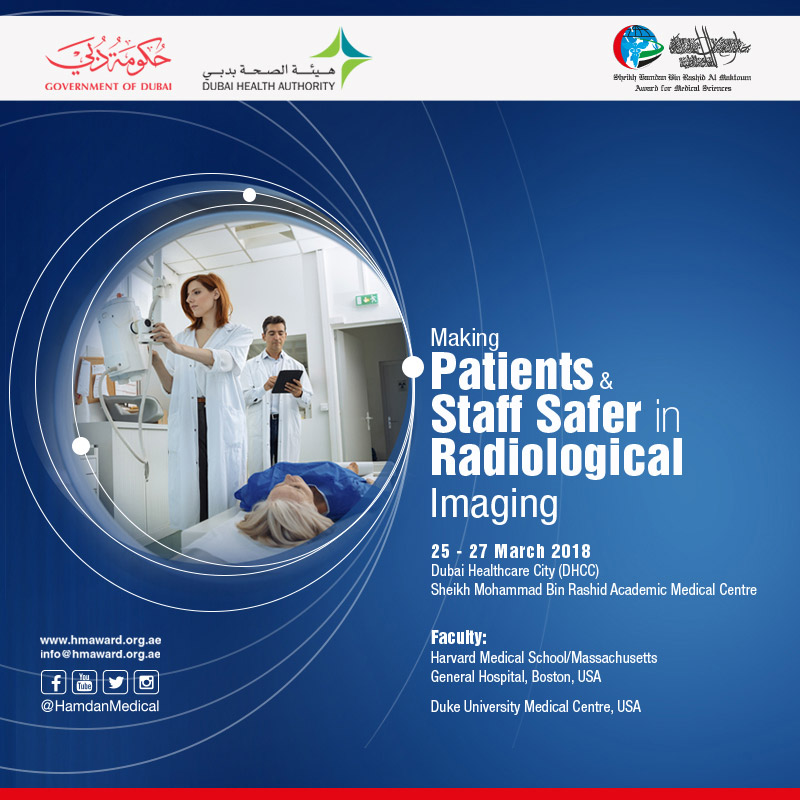Dr. Mahmoud Hag Ali and his team
UAE Awards
Hamdan Award for Original Research Paper Published in Journal of Medical Sciences
2011-2012
Effect of Dehydration in the Presence and Absence of the Angiotensin Receptor Blocker Losartan on Blood Constituents in the Camel
(Published in the Journal of Medical Sciences Volume 4 Issue 2, 2010)
Personal Details/Academic Background
Mahmoud was born in Eretria in the Eastern Africa in the year 1956. After his schooling, he did his graduation in Veterinary Medicine from Khartoum in Sudan in the year 1979. He submitted his PhD thesis in Pharmacology (to be defended in December 2012) to the Faculty of Pharmaceutical Bioscience, Uppsala University, Sweden.
After receiving his graduation in 1979, Mahmoud joined as Veterinary Medical Doctor and inspector of food hygiene in Eritrea. Spanning his career prospects, he accepted the position of head of the veterinary section of the private department of His Highness our Late President and His Crown-Prince. There, he was responsible for animal welfare, including treating and breeding different farm animals, like camels, cattle, sheep, goats, deer, rabbits, birds, and falcons. Along with veterinary care, his enthusiasm in research encouraged him to collaborate with the researchers, and faculties of College of Medicine and Health Sciences, UAE University.
Professional Milestones
Mahmoud joined as a researcher at College of Medicine and Health Sciences and later on registered for the Ph.D. program in affiliation with Uppsala University-Sweden in collaboration with College of Medicine and Health Sciences, UAE University.
His credentials in biomedical research can be witnessed by his good number of research papers published in standard referred journals. He attended several conferences, workshops and training programs emphasizing on basic and clinical aspects of neuroscience. Following his successful career as Head of the Veterinary Section of the Private Department, Mahmoud recently accepted the position of Veterinary Doctor/Animal Facility Controller at Animal Research Facility Unit, CMHS, UAE University.
As a controller of the Animal Facility Unit, Mahmoud maintains a high level of hygiene and sanitation and manages the animal house and uses programs, facilities and procedures ensuring the appropriate care, use and humane treatment of animals used for research, testing and teaching. Mahmoud associates with active interdisciplinary research groups that involve collaborations among students, faculty, and research scientists and small R&D firms. He is a member of the Institutional Animal Ethics Committee and ensures that the animals are used for research purposes in a humane manner.
Conferences and Training
He has attended the workshop on Medical Research grant & Manuscript Preparation, Dubai 17 Dec. 2004 and International Neuroscience Conference & workshop on Neurology / Psychiatry 26 Nov. 2005 FMSH, UAE.
Research and Publications:
Mahmoud has a vast experience in research techniques of Tissue sectioning & Immunohistochemistry, Receptor- Binding & Receptor Autoradiography, Radioimmunoassay & Western blotting.
He has published more than 13 papers as well as a book in AL-Rayed in Dog Reproduction and Breeding. He has presented a good number of posters in various international conferences.
Title of the paper published
Effect of Dehydration in the Presence and Absence of the Angiotensin Receptor Blocker Losartan on Blood Constituents in the Camel. “Published in the Journal of Medical Sciences olume 4 Issue 2, 2010”.
The research study by Dr. Mahmoud Hag Ali et al. was published in the Journal of Medical Sciences (JMS) in 2010. The one-humped camel (Camelus dromedarius) is widely distributed in the Gulf countries.
It is well known that camels are able to survive water deprivation for long periods of time without ill effects. Indeed, it has been shown that the camel can tolerate a loss of water corresponding to 30% of its body weight whereas other mammals often die from circulatory failure when water loss involves 12% of body weight.
The camel’s physiological adaptation to its desert environment is due in part to its extremely low rate of water turnover which is accomplished by minimal use of evaporative cooling, low urinary output, and its ability to extract water from undigested feed residues. Furthermore, the camel can change its body temperature in response to alterations in the ambient temperature in order to save water6. It is clear that thirst and secretion of antidiuretic hormone (ADH) are pivotal to the maintenance of body fluid homeostasis under many circumstances.
Regulation of both thirst and ADH secretion is largely, if not exclusively, under the regulatory control of plasma and tissue osmolality and circulatory volume. Whereas it is known that the renin-angiotensin system, which is activated during dehydration, is capable of modulating thirst and ADH secretion under some circumstances, its role in response to sustained dehydration in the camel is not clear.
The unique ability of the camel to survive extreme water deprivation suggests that extrapolation of data from other species might not be applicable to the camel. Our hypothesis was that the rennin-angiotensin system (RAS) is an important regulator of electrolyte balance across water deprivation in camels.
With the advent of drugs such as losartan which specifically block the angiotensin II AT-1 receptor, it is possible to dissect the physiological role of the RAS under various circumstances including dehydration. Accordingly, we measured selected biochemical and hematological indices across 20 days of dehydration in camels with or without concomitant administration of losartan compared with control, nondehydrated, camels.
The research study is being recognized through the Hamdan Award for Original Research Paper published in the Journal of Medical Sciences.

